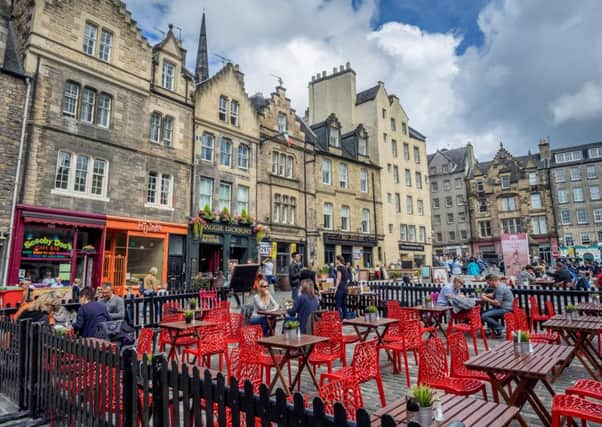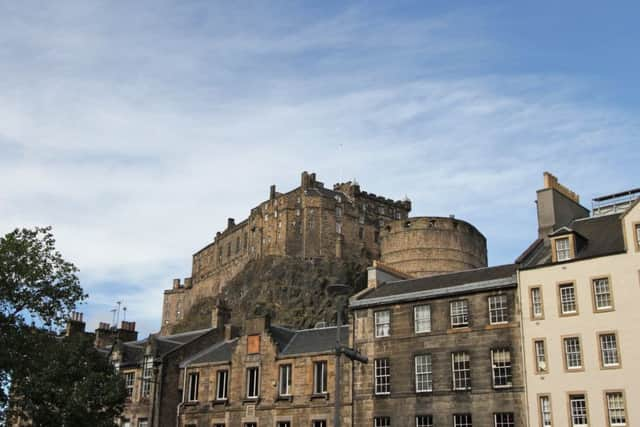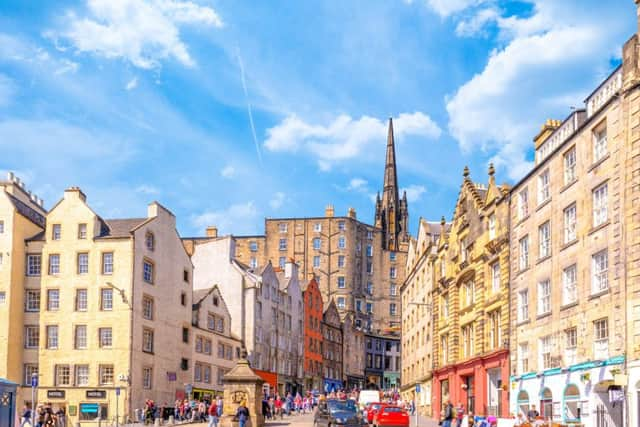11 secrets of Edinburgh's Grassmarket you probably didn't know


• READ MORE: Lost Edinburgh: Grassmarket
Here are some little known facts and legends from the past of this vibrant area in Edinburgh’s Old Town.
It has been used by humans for a long, long time


When Edinburgh City Council were developing the Grassmarket a few years ago, archaeologists found evidence of early human life.
Advertisement
Hide AdAdvertisement
Hide AdCarbon dating revealed that the area was in use by humans over 3,000 years ago, in the Middle Bronze Age, around 1500 to 1300 BC.
A lot of people died there...
The Grassmarket became the official spot for public executions in Edinburgh in 1660, and remained so for over a hundred years. As a result, it became the scene for a great many deaths.


Even a hangman was executed at the Grassmarket, after he was found guilty of murdering a beggar.
In 1736, the area was also the site of the famous Porteous Riots, which saw inept Captain Porteous (leader of the Town Guard) lynched by angry locals.
Really - a lot of people
Advertisement
Hide AdAdvertisement
Hide AdBetween 1661 and 1668 alone, over 100 Covenanters were put to death in the Grassmarket in a period known, brutally, as ‘The Killing Time’.


A memorial was erected in their honour in 1937.
One woman cheated death there
In 1724, Maggie Dickson was charged with murder and condemned to hang in the Grassmarket, after she hid an illegitimate pregnancy and the subsequent stillbirth of her child.
Dickson woke up in a carriage after her hanging and went on to live a long life, as she couldn’t be tried again for the same crime under Scots law.


In 1775, an advocate tried to replicate Dickson’s amazing escape from death with one of his clients, and even had surgeons ready to resuscitate the man - before deciding against it.
• READ MORE: Unearthing secret past of the Grassmarket
It used to be known as ‘Little Italy’
Advertisement
Hide AdAdvertisement
Hide AdEarly Italian immigrants to Edinburgh made their home in the Grassmarket area. Legend has it that the first Italian immigrant arrived in 1882, and worked as an organ-grinder.
The Grassmarket gained a reputation for Italian music and ice cream, and gained the nickname ‘Little Italy‘ for a time.
There was a fight about a giant nose there
The protruding, giant nose above Aha Ha Ha joke shop on West Bow in the Grassmarket is a stand-out feature in the area.
However, back in 1996, the idea was initially rejected by Edinburgh Council for being too big, and detracting from the atmosphere of the area.
A Star Wars rebel owned a Grassmarket pizzeria
Advertisement
Hide AdAdvertisement
Hide AdGold Leader - known outside the Star Wars universe as actor Angus MacInnes - opened popular local eatery Mamma’s Pizza in the Grassmarket in 1985.
Mamma’s is still going strong under new ownership, but served up Star Wars themed pizzas to celebrate the release of The Force Awakens.
It used to be home to a ‘wizard’
In 1670, after he had retired from his post as Commander of the Edinburgh Town Guard, Major Thomas Weir grew ill, and from his sickbed told strange stories of a life of wickedness and vice.
His sister, Jean, also confessed to dabbling in witchcraft and sorcery with her brother, who she said had been given supernatural gifts when he rode in a fiery carriage, and gained his power from a walking stick.
Advertisement
Hide AdAdvertisement
Hide AdThe pair were found guilty of witchcraft, condemned to death, and Jean was executed in the Grassmarket.
• READ MORE: In pictures: Edinburgh Christmases past
It was bombed by a German zeppelin
During World War One, in 1916, the Grassmarket was targeted by a German zeppelin in a rare bombing north of the border.
Four people were injured and one died at the White Hart Inn, before the bombers moved on and caused more destruction across the city.
It’s rumoured that the One O’Clock Gun was fired, and helped to dissuade the bombers from further action.
More than one of the pubs are haunted
Advertisement
Hide AdAdvertisement
Hide AdWith parts of the building dating back to 1516, the White Hart Inn is not only the oldest pub in Edinburgh city centre, but it also claims to be ‘the most haunted’ pub in Edinburgh.
Over the years, staff have reported mysterious noises, slamming doors, shadowy figures and even disembodied limbs in the pub.
Another Grassmarket pub, the Last Drop, is said to be haunted by the spirit of a young medieval girl.
It helped to keep out armies
The Flodden Wall was built around the Old Town of Edinburgh, and fortified to keep the English armies out after the tragic Battle of Flodden in 1513, as well as to deter smugglers.
Today you can follow the remains of the Flodden Wall up from Grassmarket and around Greyfriar’s Kirkyard and the Old Town.